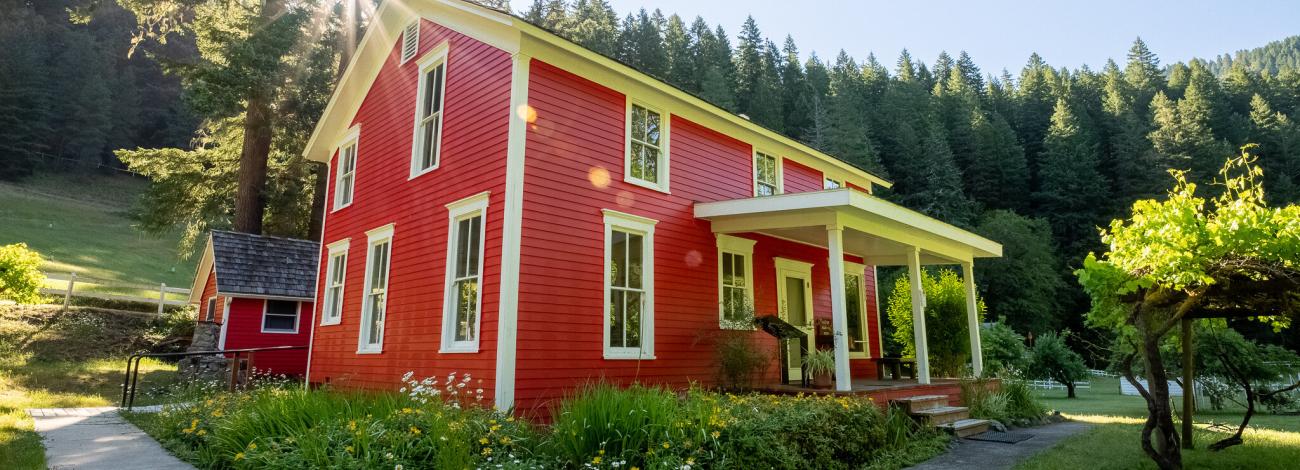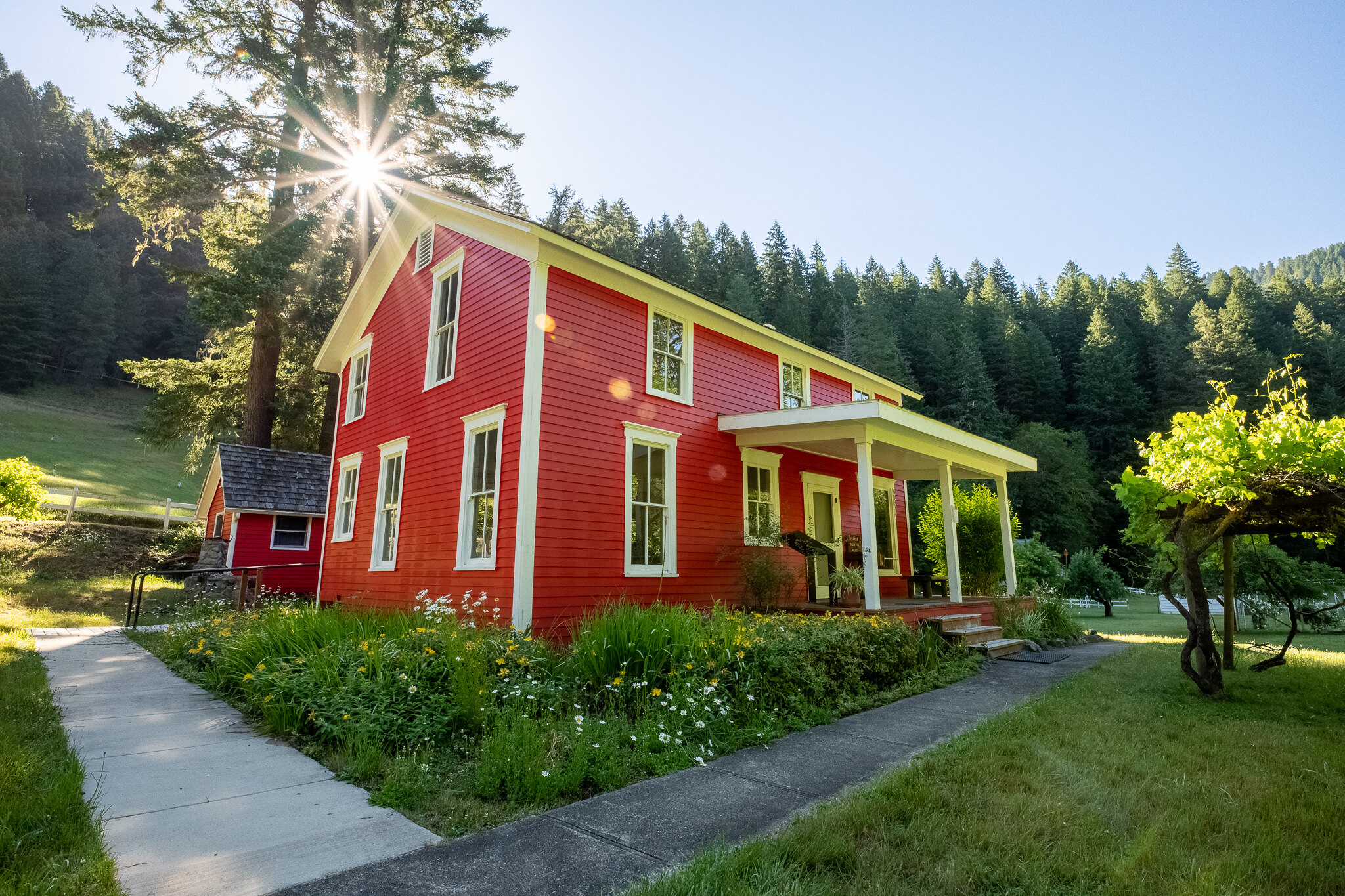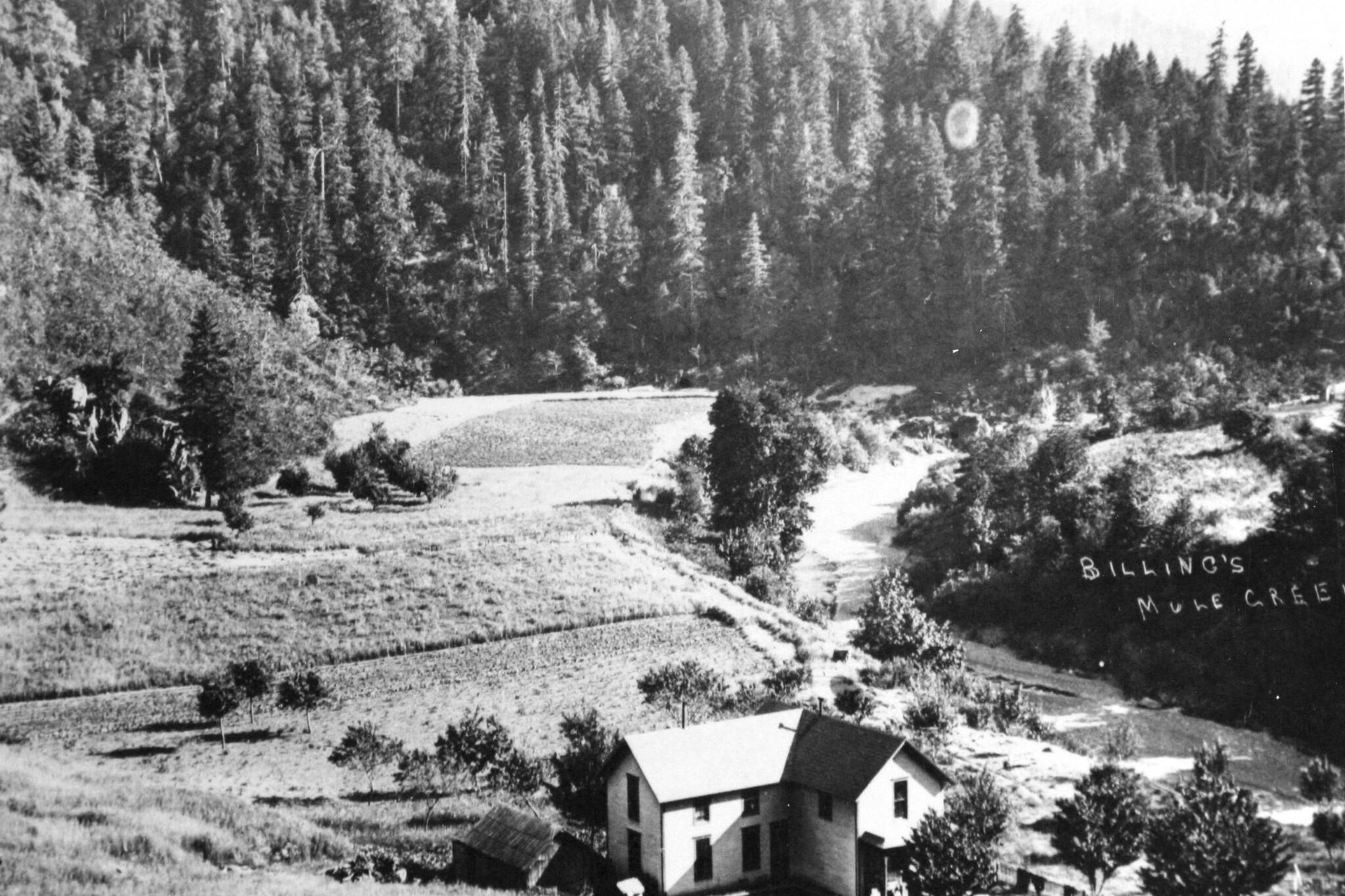
Rogue River Ranch National Historic Site | Oregon
Located at the mouth of Mule Creek and nestled in the heart of the National Wild and Scenic River’s wild section of the Rogue River, this historic site tells the story of the area’s transition from mining to recreation and conservation.
History
The original structure was built in 1903, and it was quite the process in remote southwest Oregon. A neighbor felled trees for the homesteading Billings family when they decided to build a more permanent two-story dwelling. The windows needed were delivered via the O&C Railroad from Portland then carried by pack mules for 21 miles from Galice . The ranch and beautiful surroundings, much of which are public land managed by the Bureau of Land Management, remains just as remote today.
The building served as a base of operations for John Billings’ nearby mining operations along Mule Creek, but the family’s entrepreneurial efforts did not stop there. In addition to working the claim, the family also set up a general store that would sell commodities such as mining tools and coffee to local inhabitants of the rogue River Canyon. The top story of the farmhouse was converted to a hotel that would service travelers and seasonal laborers traveling through the Rogue River Canyon. In 1929 Elijah Pierce became the first postmaster of the Rogue River Canyon, and the Ranch was his first post office until it was moved to Illahe down river a few years later.
Despite the difficult journey required to reach the ranch, it is obvious why humans have been drawn to the area for thousands of years. Seated at the confluence of Mule Creek and the Rogue River, the abundant water provided bountiful fishing opportunities for Native Americans, while the surrounding forests provided access not just to food resources, but also plants important for basket weaving and other necessities of prosperity. Archaeological excavations from nearby sites, mostly in the 1980s, show that Native American roots in the area go back about 10,000 years.
Three generations of the Billings family lived at the site on the north bank of the Rogue, creating a community center of sorts for the area of Marial. In 1927, the family sold the property for $5,000 to the Andersons of Beverly Hills. The new owners invested heavily in the property, bringing some improvements and a little bit of Hollywood to the area. These improvements included a barn for their horses, a tack house, and a blacksmith shop. Perhaps their most important contribution was the improvement of the road accessing the ranch. Prior to their work on the road, it was a mule trail, unfit for cars. In 1970, the Anderson family was using the property less and less, and Federal Government was trying to acquire property along the newly designated Wild and Scenic River Program. The Andersons sold the property to the U.S. and in 1975, the Rogue River Ranch was listed on the National Register of Historic Places. The BLM is caretaker of the ranch, which is a must-stop attraction not just for rafters but backpackers on the Rogue River National Recreation Trail, too.
Know Before You Go
- The site is open from May through October.
- Access is challenging. If you drive, be prepared with a full tank of gas and plenty of food and water. There are no fuel stations or services along the route. Drive with care as the roads are narrow and winding.
- Primitive camping is available at the nearby Tucker Flat Campground.
Point of Interest
In an effort to preserve this heritage for all to enjoy, the BLM completed a substantial remodel of the main ranch house between 2017 and 2019. The remodel, which focused on improving visitor experience, developing formal museum exhibits, and improving interpretive signage, provides historic context and information on the unique lives of the area’s inhabitants through history. The museum is open now! If you're interested in visiting, you can access the area via boat, hike, or car.
Photos
Accessibility Description (ABA/ADA)
No accessible facilities.
Contact Us
Activities
Addresses
Geographic Coordinates
Directions
From Glendale, head West on Brown Road past where it becomes Cow Creek road, approximately 12. Turn left onto BLM Road 32-7-19.3. This is also known as the Dutch Henry Road.
Continue on Dutch Henry/32-7-19.3 for 8 miles to it’s three way junction with 32-8-31, also called Kelsey Mule, and BLM road 32-8-31.1. Dutch Henry/32-7-19.3 ends at this intersection, but continuing straight will put you on Kelsey Mule. Travel 5 miles to the junction with BLM Road 32-9-14.2. This is a large junction with a sign to Marial. Go left as the sign instructs.
This is the Marial Road, or BLM road 32-9-14.2. Continue for 3 miles to the Marble Gap Junction and continue ahead after the pavement ends. Travel 3 miles to the Fourmile Saddle Junction, go left and stay on BLM Road 32- 9-14.2 for 9 miles to the Rogue River Ranch National Historic Site.
Fees
No fees.






